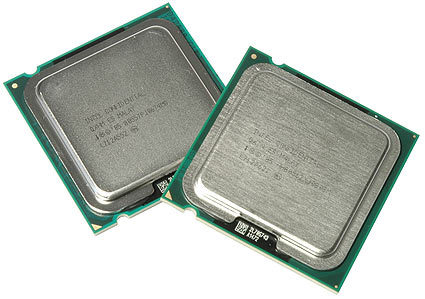Tom's Hardware's 2007 CPU Charts
Processor Pricing
| Processor | Core Count | CPU Clock | FSB Speed | L2 Cache | Price per 1,000 |
| Core 2 Extreme QX6850 | 4 | 3.0 GHz | FSB1333 | 2 x 4 MB | $ 999 |
| Core 2 Quad Q6700 | 4 | 2.66 GHz | FSB1066 | 2 x 4 MB | $ 530 |
| Core 2 Duo E6850 | 2 | 3.0 GHz | FSB1333 | 4 MB | $ 266 |
| Core 2 Duo E6750 | 2 | 2.66 GHz | FSB1333 | 4 MB | $ 183 |
| Core 2 Duo E6550 | 2 | 2.33 GHz | FSB1333 | 4 MB | $ 163 |
Conclusion
Intel's new processors hardly make a difference in performance and they also stay within existing thermal envelopes. However, they might still be an important step towards the next processor generation in 45 nm. We expect these new CPUs to support significantly higher core clock speeds, which results in higher bandwidth requirements that FSB800 or FSB1066 probably cannot support - especially with quad core processors in mind. Consider the FSB1333 CPUs as pathfinders for the next processor generation. In any case, the Core 2 processors were and still are the fastest processors available - in terms of performance per clock - and Core 2 Extreme with four cores clearly is the fastest x86 processor on the market today.
If you are about to purchase a new platform, we recommend going for one of the latest chipsets (Intel P35, G33, Nvidia nForce 6 series) and probably one of those FSB1333 processors. The average performance advantage of 1% when compared to FSB1066 shouldn't be the reason; the attractive pricing of $163 and $183 for the E6550 and E6750, and the fact that you'll get the latest G0 stepping are highly appealing. Hopefully AMD will be able to release its next processor generation before Intel can switch to 45 nm, because being two steps behind could open a gap that AMD could find difficult to close.
We apologize for the QX6850 top model being missing from the benchmark lineup; we will add it to our interactive CPU Charts database shortly. At any rate, it performs slightly better than the QX6800, given that there is a 70 MHz clock speed difference (2.93 to 3.0 GHz).
Join our discussion on this topic
Get Tom's Hardware's best news and in-depth reviews, straight to your inbox.
Current page: Processor Pricing
Prev Page Windows Vista Performance Index
Patrick Schmid was the editor-in-chief for Tom's Hardware from 2005 to 2006. He wrote numerous articles on a wide range of hardware topics, including storage, CPUs, and system builds.
